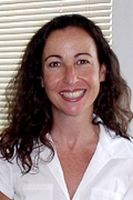Friday, April 19, 2024
News and Views from the Global South
WOMEN-MEDIA: Who Is the Editor?
Miren Gutierrez interviews ELISA MUÑOZ, project coordinator of The Global Report on Women in the News Media
- For the first time in 15 years, an organisation, the International Women’s Media Foundation (IWMF), is attempting to measure the progress, or lack of progress, of women in media organisations globally.
Its report – to be released in 2010¬ is examining the structure of the news media industry worldwide from a gender angle.
In a previous article on the same issue, IPS found that women’s representation at the higher echelons of power in media organisations is very low, even in the best cases. For example, in Sweden three out of four leaders in the media industry are men, according to the 2007 report ‘The Gender of Journalism’, authored by Monika Djerf-Pierre.
In e-mailed and phone interviews from Washington, Project Coordinator Elisa Muñoz (also the director of research of the IWMF) spoke to IPS.
IPS: What are the premises of the research? ELISA MUÑOZ: The IWMF is undertaking the most comprehensive international study ever conducted on the status of women in the news media. The study will sample 500-600 news organisations in some 66 nations (internet-only companies, news magazines and news agencies are not included). A previous study, ‘An Unfinished Story: Gender Patterns in Media Employment’, was published in 1995 by UNESCO. It was written by Margaret Gallagher, who is on our Research Task Force.
Conducted in 43 countries, Gallagher’s study found that in most countries women’s professional representation in the news and other branches of the media ranged from a high of around 30 percent down to the single digits, except in a few Nordic countries, where women were on par with men.
In our own study, we have refined the methodology (e.g., definitions of occupational categories) and evened out geographic representation.
IPS: At what stage are you right now? EM: The Global Report study takes a social science approach in its methodology. The goal is to have a representative sample of nations such that all regions will be represented, and that both the number of nations and the number of news media companies surveyed are large enough to allow findings to be generalised globally.
The unit of analysis is the media company. The variables of concern are gender with respect to occupational status, salary, reporting assignments, opportunities for training and promotion, and other company policies.
The sample of news companies per nation was determined by a laborious process that involved collecting and entering information about each nation’s newspapers, radio and television stations. For this, we used the GMMP (Global Media Monitoring Project) model for determining media density as a guideline, but our particular approach modified this by combining electronic and print companies.
We developed a 12-page, 52-question document. A questionnaire developed by Gender Links’ (a Southern Africa-based organisation committed to equality) was used as a basic model from which we developed a more extensive instrument.
We tried to keep the kind of information similar enough to the Gender Links questionnaire to assure that their data would be comparable to at least 75 percent of the items on the IWMF questionnaire.
IPS: How is this all coordinated? EM: The project’s administration is organised along a decentralised model.
The Principal Investigator, Dr. Carolyn Byerly, developed the questionnaire and the instructional materials for use in data collection. The data collection was accomplished by way of 19 regional coordinators; each oversees a cluster of nations. Their role is to select, hire, train, and supervise researchers; to propose the specific media companies to be surveyed (subject to IWMF approval); to assure that all data are submitted to IWMF on time; and to fulfill a number of related administrative tasks.
The principal investigator has established certain administrative routines that enable coordination and communication to occur on a regular basis.
All data are to be processed, analysed and written up at the IWMF headquarters, under the direction of the principal investigator.
The data is collected from Eastern, Northern, Southern and West Africa, Northern and Southern Latin America, North America, Caribbean. Asia and South Asia, Oceania, Eastern, Western and Nordic Europe, and the Middle East.
We are currently conducting interviews on the ground. Researchers are sending their data as it is collected… We will not have preliminary findings until October.
IPS: In a previous interview with IPS, former IWMF Executive Director Jane Ransom said that although she was hopeful that this report would show “some areas of progress”, she would not be surprised “if the trends show stalled progress in some important areas, too.” Would you concur? EM: I believe that we will find more women in the journalism profession around the world. However, we will likely continue to find that women are underrepresented at higher levels of management.

 Print
Print




